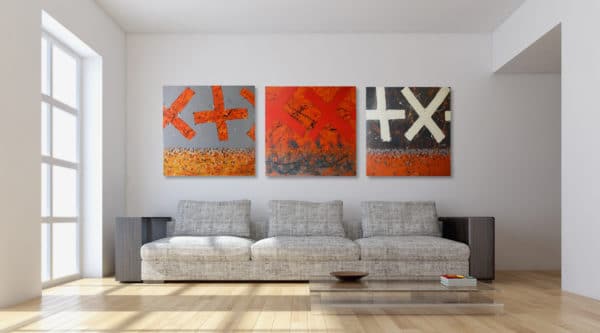Selling Artwork : Tips to Sell Your Art
How to Start Selling Your Art
So, you love making art and would love to make a living from it, but selling artwork can be difficult. As a gallery that is built on the renting and selling of art, we have 3 top tips for you.

Selling Artwork
Top Tip #1: Finding the Right Gallery
There are many galleries around Auckland, so it is very important to know the gallery you’re trying to get involved with and if it is appropriate to approach them. Not all galleries are focused on the selling or renting of art, so make sure you research them well.
How to Make Money: Sell or Rent?
Knowing if you want to sell, rent or both is also an important aspect of choosing a gallery. If you’d like to focus on the renting of your artwork, it benefits you to do research into what kind of people and businesses rent art. For example home staging companies, reception areas for business, lawyer offices and hospitals etc. With home staging companies they do not rent directly from artists and all have different styles of homes and decor, so look into what they do and if you fit their style.
How to Make Money: Galleries
Doing research into galleries you want to be a part of is crucial to building a relationship and knowing how your artwork can fit into the gallery. It is also even more important that you understand your own artwork and potential buyers; this puts you at a complete advantage and will mean that galleries will find it easier to work with you and your art.
When getting to know a gallery go to exhibition openings, scour websites and Facebook pages to see what kind of art they have. It is also good to know how they market the artwork and who their target audience is. This is important as your work will become a part of that promotion.
Why Go to a Gallery?
Whether you are an established artist or taking your first steps in getting your art out into the world, a physical gallery means there is a wider viewership for your work which generates new buyers. It creates new interests and helps to educate buyers and new followers. The gallery also handles negotiation, payment, admin, installation and the biggest part of all, marketing, so you can spend your time making more paintings.
How to Contact a Gallery
Not all galleries welcome cold calls or emails, so again make sure you know who you’re approaching. Most galleries, including Mobile Art Gallery, would rather be contacted through email and need the following information:
- An artist bio (examples can be seen here, )
- Good photos of available artwork
- Important information such as size, medium(s) and price
Selling Artwork
Top Tips #2: Your Paintings
Artwork Quality
When you give a painting to be sold or rented, the quality of the canvas and overall presentation of the artwork makes it a lot easier to sell or rent the artwork. Buyers or renters will often expect a discount if they see a warped frame or messy edge. Anything that would potentially be seen as a defect can be used by a potential buyer to try to haggle the price down. If you have a habit of messy edges on your paintings, invest in some low TAC masking tape, continue the painting around the edges or paint over the mess.

Ready to Hang?
This is a biggie. All artwork must be ready to hang!
If your painting can be hung in any orientation, place two sets of D-rings on the back. This means that firstly, stringing it up when a client wants it installed a different way is easier and more time efficient and secondly, the buyer or renter can see that the artwork can be hung in a different orientation.
Signature
When an artist puts their signature in a black and bold hand on the front of a painting, not only does it limit the hanging orientation, it is most often very distracting when looking at it and can be a deal breaker for the buyer. We suggest that for all paintings your signature goes on the back of the painting. Do not worry; they will not forget about you, they like talking about the artist who created the painting. Galleries also give buyers information about you, so your legacy will be there without the distracting signature stamp.
Title Your Work
Customers often ask about the title of works. Titles often affirm the connections a buyer makes with the work.
There are different ways to title your work, from the anecdotal to metaphorical or descriptive. Selling or renting paintings with titles is much easier than marketing an artwork with the name ‘untitled #20’
For example, a customer was looking for a painting for a spare room for their granddaughter. She saw a painting called ‘Bed of flowers’. The title was appropriate to the artwork and helped the buyer decide it was the right artwork for the location.
Do not forget that titling your work also makes the archiving of it so much easier! Also remember to place your name, and work title on the back of the canvas/on the frame.
Artist Bio
This is a great opportunity to control what and how much people know about you and your art practice. It is a way to let people know what drives your art practice, along with your broader interests, that may not be evident in every piece of art you make.
What to Think About When Sharing Information About Yourself
Are there anecdotes attached to why you paint or particular paintings you do? Stories about how you came up with your ideas and created them? These are important things that can help us understand who you are as an artist.
We understand that not all artists are comfortable talking about their work, it can be difficult. Some think that making statements about the meaning or how a painting was created may stop potential interpretations, but it doesn’t. A good gallery operator will know when to share information with interested buyers. By giving more information, you are creating more depth for the viewer or buyer to appreciate the work in context. Buyers often like explaining to friends and visitors why they like your painting so much that they bought it.
Share what drives you as an artist, your passion and inspiration as it allows people to make a deeper connection with your work. It is the connection with your art that makes people buy it.
Storage
If you have a lot of paintings, keep them either wrapped in plastic or in a dry and clean area! When gallery owners visit studios and artists pull paintings out from their garage and they’re covered in spider webs and insects, it’s not a good look. If you don’t look after it or see value in doing so, then why should anyone else.
Selling Artwork
Top Tips #3: How to Keep Motivated When Your Work Doesn’t Sell
If you are sure you have done everything right and selling artwork isn’t going too well, don’t worry. Art is subjective and it’s a very competitive sector. It could be time to get out some books or visit some galleries and keep inspired. Find what makes you tick and what you enjoy about art making. Look into who you would like to sell your work to or whether you would like to have your work rented out. Don’t be afraid to contact your gallery representative for some feedback. If you have chosen an honest and upfront gallery to represent you, they will be happy to talk about your work and discuss the reaction the public have had to it.
Be sincere and enjoy what you do, there will be someone somewhere who will love it. One of the most valuable things from these top tips is to keep trying and enjoy what you do which makes selling artwork easier. There are a lot of different approaches to art making and how to make money from your art. To see some top tips in action, check out some of our artists below.
Rachel Rush, Peter James Smith, Jody Hope-Gibbons, Virginia Leonard.
If you’ve enjoyed this post you may like to read about some inspirational painting quotes.
Also, if you want to rent art but want to know some information first, here’s our guide about hiring art.
